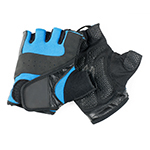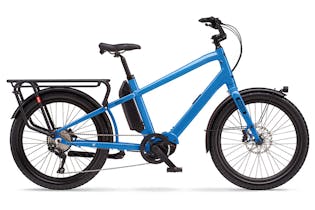
E-bike commuting guide
Take a gander at our guide to the quirks of riding an e-bike.

It feels fantastic to ditch the car or public transport in favour of pedal power, and e-bikes are making this achievable for more people than ever before. It might have been years since you last jumped on the saddle, so before heading out take a gander at our guide to the quirks of riding an e-bike.
Dealing with traffic
It’s nerve-wracking the first time you hit the streets. Cars, buses and trucks will whiz by your shoulder, sometimes uncomfortably close. Cyclists will always come off second-best in an incident with a car, so ride defensively. Get used to looking over your shoulder – it changes your balance and takes practice. Signal your intentions early and be aware of your surroundings. Get a bit of practice in on quiet local roads.
While cycle lanes are appearing all over the country, sooner or later you’ll find yourself in the flow of traffic. It helps to map out a commuting route that takes you away from the normal hustle and bustle. This may be different to the one you’d usually take in your car, look for quieter streets and ways to link up with cycle lanes on the way. Google Maps can show cycle route options and your council website should have information on cycle lanes.
Watch your speed
You can zip along faster on an e-bike than on an ordinary bike, so encountering other cyclists in busy traffic or cycle lanes can be a test of patience and politeness. You’ll need to slow down below your usual cruising speed. Remember you’re sharing the road or cycle path with others.

Motorists will be surprised at how fast you’re going. They may pull out in front of you, thinking they have more time. Most drivers don’t set out to ruin your day, but people make misjudgements, especially when estimating an e-cyclist’s speed. Be ready to stop in these scenarios, even though you’re well within your rights to feel annoyed.
E-bikes are heavier, so can’t stop as quickly. Scan further ahead and be ready to brake earlier. The extra load on the brakes also wears pads down faster than their non-powered counterparts. If your brakes are squeaking or losing performance, it’s time to get them changed. We recommend you choose an e-bike with disc brakes (these have better performance in all weather conditions).
Weather to ride?
Slow down and take care when roads are wet. A film of water makes rubber lose all its stick. Wet manholes, road markings, concrete and train tracks all present major hazards to cyclists. Your e-bike can handle a bit of rain, but you’ll need to adjust your riding to suit the conditions. Think smooth when it comes to braking, accelerating and cornering. You might even want to dial the motor assistance back so you have more control.
High winds can be nasty – even the extra weight of an e-bike can’t overcome the power of a strong southerly. If the weather is getting wild, you’re better off going back to the car or bus to keep yourself safe.
Flat tyres
Flat tyres are an unfortunate reality of cycling. The first tyre change can be a dirty, frustrating and difficult experience – even more so if you have a hub-driven e-bike with its heavy, motor-encased wheel. Ask for a lesson from your bike shop at the time of purchase; YouTube is full of helpful videos as well.
Gear and accessories
Having the right gear and accessories can help you enjoy a stress-free pedal to work.

Helmet: Protecting your noggin is a legal requirement. Safety-wise all helmets are similar, but as the price goes up they’ll tend to have more venting, be easier to adjust and weigh less.
Tools: Don’t get caught out. A puncture kit fits easily under the saddle. Keep a pump in your bag or fitted to the downtube, and be sure to include a cycling-specific multitool for taking off wheels or making adjustments on the fly.
Lights: Stand out and be seen. Front and back lights are a legal requirement at night, but it doesn’t hurt to keep them on during the day to increase your visibility.
Lock: Protect your pricey e-bike with a good lock. We recommend choosing one that has been independently tested and rated by ART or Sold Secure.
Shoes: Flat, stiff-soled shoes are best. Look for a pair that’ll maintain a good grip with the pedals in any weather conditions.
Tyres: Opt for puncture-resistant road tyres. Off-road tyres don’t offer as much grip on the road.

Bell: Ding-ding! Let other cyclists and pedestrians know you’re there.
Gloves: Cycling gloves usually have grippy material to help you hang on to the handlebars. At the very least, invest in a pair of winter gloves to keep your hands warm on chilly mornings.
Clothing: Loose pants and skirts can get caught in the chain and end up a greasy mess. Pant clips and chain guards help minimise the chances of this occurring. Opt for bright or reflective clothing to make sure you’re seen on the roads.
Bags: Backpacks are fine, but, to avoid a sweaty back situation, opt for pannier bags to carry your gear.
Mudguards: You might not think you need mudguards – until you ride through your first puddle. They’re essential on a commuter bike to make sure you arrive at work in a presentable state.
We've tested 48 electric bikes.
Find the right one for you.
Benno
.jpg&w=315&q=75)
Benno
.jpg&w=315&q=75)
Benno

Member comments
Get access to comment